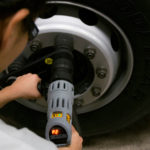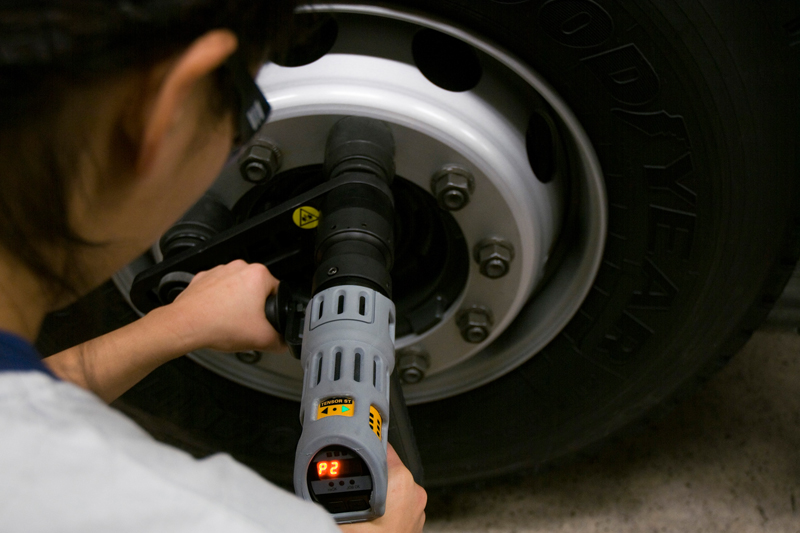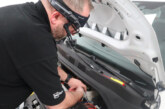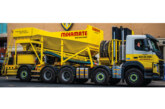Paul Clark, Business Line Manager for Atlas Copco Tools UK, examines how advances in electric tooling technology can help workshops ensure joint integrity on critical fasteners.
Ensuring the joint integrity on critical fasteners, such as wheel studs, to prevent wheel loss is certainly not a new concept. It is one, however, that continues to be an issue of great importance, due to the serious risk and potential implications of a wheel becoming detached. Should this occur, the driver and those responsible for maintaining the vehicle may be subject to prosecution, whilst the company operating the vehicle could face serious damage to its reputation and finances.
When a wheel detaches from a moving HGV, it can accelerate to around 150km/h and reach a height of 50m before colliding with other vehicles or road users at a force equivalent to 10 tonnes. Although this worst-case scenario may seem dramatic, research from the Transport Research Laboratory (TRL) has found that between 7,500 and 11,000 wheel-fixing defects are reported each year. Tragically, as many as seven fatalities resulting from wheel losses also occur every year.
From a technical perspective, TRL research suggests that wheel fixings provide adequate clamp load when all components are in good condition and properly tightened. However, it also found that there can be substantial problems involving joint relaxation, torque to clamp ratio and component temperature, which can affect joint integrity. Its report concluded that current wheel fixing designs are not maintenance-free and should be handled carefully.
Tools that torque
Against this backdrop =, workshops are faced with the potentially conflicting needs of ensuring the joint integrity of the critical fasteners they apply to a vehicle, such as wheel studs, whilst maintaining workshop efficiency to minimise vehicle downtime. Advances in tool technology can help workshops to meet this challenge of ensuring quality assurance, and core to this is the introduction of electric tools that can deliver traceable torque up to 8,100Nm.
Intelligent electric tools, such as the Atlas ST wrench, provide workshops with the equipment to provide repeatable quality assurance where ‘no click’ is needed and each fastening procedure is recorded without the need for human interaction to provide an audit trail. This delivers full traceability of the entire tightening operation and is particularly relevant to safety critical components.
Torque accuracy alone, however, is no guarantee of joint integrity on critical fasteners that are typically reused and ‘torqued-up’ using a conventional click wrench. Overtightening is a common, yet serious issue, as it increases the risk of ‘bolt stretching’, where a fastener exceeds its yield point and therefore its ability to provide the necessary clamping force. Beyond the yield point, ‘plastic deformation’ of the material in the bolt will occur, although the bolt will not break immediately. Torque will continue to increase but at a lower rate during the deformation above the yield point. The plastic deformation will result in a permanent elongation of the bolt when the joint is loosened.
Exposure to excessive levels of vibration can cause hand-arm vibration syndrome or ‘HAVS’, a debilitating disease, which affects both circulation and the fine nerves in the fingers, as well as being a causal factor for Carpal Tunnel Syndrome. It can result in pain in cold weathers and permanent loss of sensation. Furthermore, vehicle repair has been identified by the HSE as an industry where jobs are most likely to involve hand-arm vibration, increasing the risk of technicians developing HAVS.
Fortunately, the latest generation of Atlas Copco electric tools are also ergonomically designed to provide a high level of operator protection. Combining knowledge from human, work-related and production science, ergonomics is the science of refining the design of products to optimise them for human use. When it comes to power tools, ergonomics concerns a number of areas including handle design, trigger type and location and weight, as well as torque reaction, noise and vibration.










